|
How do you modify a Hipababy full buckle to make it a better fit for a small baby? With a custom made carrier you the option is available to add a built in cinching system and some in stock carriers will have this available too. If your carrier doesn't have the built in adjustments you can modify your carrier by cinching the base with a ribbon and/or wearing the waist apron style. Wearing the carrier with the carrier a little higher on your body than shown below will also shorten the body panel further. A baby size carrier (38cm x 38cm/ 15"x 15") is suitable from around 6 months or so but when cinched will work from around 6kg/00 clothes (or around 2-3 months). Infant size (35.5cm x 37cm/14" x 14.5") works from around 4 months uncinched or from newborn (4kg cinched). Don't use a larger sized soft structured carrier with a small baby as you will not have enough back support increasing the risk of slumping. When using a full buckle with a baby under 4 months baby's back must be well supported and baby's chin must not fall onto their chest (which can obstruct breathing). Baby also must not be buried right down into the carrier. Ideally you would want the top of the carrier (where the straps are attached) no higher than earlobe level. Below are some tips and tricks on how to use the built in adjustments, or if you have basic carrier without built in cinching some tips to help to get a better fit. The carrier in these instructions is a baby sized carrier with adjustable base and sides. The demo doll is wearing 00 clothes so is around the size of a 3 month old. How to modify with a ribbonIf you have a standard carrier with no built in adjustments you can use a ribbon or accessory strap to cinch the base of the carrier to a narrower setting. It is easier to tie the ribbon on with the waistband already clipped around you as the waistband will lay flatter that way. Tying with a ribbon will also shorten your carrier a little. If you need to shorten the height even further you can wear the waist apron style (more on that later). Using a carrier with built in adjustmentsIf your carrier has built in adjustments cinch the carrier as shown in the photo below and then put your carrier on as normal. Pull the height adjustment ties to scrunch the fabric to the desired height and tie in a loose knot. Fold the edges of the waist back on itself like an accordion. This will keep the fabric from slipping back and will cover the Velcro strip. For an in between width, fold more loosely or just scrunch the waist instead. Remember make sure your baby is close enough to kiss! This will ensure you can monitor baby's airway and the higher you wear the waistband the shorter the panel will be which also helps to get a good fit. How to wear apron styleWearing apron style will shorten your carrier even further. You will need to remove the buckles and re-thread them the opposite way for this method so your buckles don't end up upside down. Flip the waistband so the reverse side facing out and the panel is hanging down like an apron. You may also need a ribbon for this as the folds on the adjustable waist tend to spread a bit wider when worn apron style. Put the panel on as you normally would. When you are finished you will not see the waistband under baby's bum as you would when wearing in the regular way. If your carrier has a built in height adjustment you can cinch the panel before putting the carrier on and that will shorten the carrier the maximum amount. Height of the panel uncinched. Height of the panel cinched with the built in drawstring and headrest folded down.
0 Comments
This is an example of the fit of standard size with an older toddler. This full buckle is made from a dyed hemp indio and paired with a Michael Miller - Fantasy Forest. The carrier also features a wrap scrap rainbow tree appliqued on the inside of the pixie hood. Standard size is still a good fit for my toddler. it should fit him well until at least 3. Taller toddlers would grow out of it sooner - probably close to 2 and a half. My toddler is around 50th percentile for height and will be two and a half in two weeks. The carrier is still knee to knee on him. The height is perfect for him as it is easy for him to have his arms out which he prefers. He can still put his arms in if he likes but I don't have a photos of that as he only likes to do that if he is sleepy (and even then not always). When he is arms in the very top of the curved headrest rests on the nape of his neck and the sides of the carrier are an inch or two below the top of his shoulders so it still provides good back support. Another photo of toddler snoozing - 2 years, 11 months. Standard size can last a long time if you have an average sized toddler or smaller. Knee to knee support is still good at almost 3.
My mei tai's, half buckles, and full buckles vary in how they fit and how easy they are to modify to fit different sized children. I don't recommend wearing too big a size in half buckle/full buckle. Ideally a mei tai should also be the correct size but they are much easier to modify to fit than the other styles so can fit a wider size range. Mei Tai's and half buckles have no darts in the smaller sizes (so your baby will be held close to your body) but the toddler size does. Darts allow a wider/deeper seat without having to make the whole carrier wider and tend to make the whole carrier fit a bit bigger. Carriers with darts tend to hold your baby slightly away from your body (which transfers the weight mostly to your hips) so I have added darts to all my full buckles to help keep the weight off your shoulders since you cannot offset this weight by tyiing the shoulder straps as you can in a mei tai/half buckle. If you have Flared Straps (padded to wrap) on your carrier you can use the spread out wrap part of the straps the extend the width of the seat for a child who has begun to outgrow it. It is not essential for a toddler to be knee to knee by the way (one of my daughter was happily carried occasionally up to five years old in a standard size carrier) but knee to knee does tend to be more comfortable and allows a better weight distribution for wearer and wearree. Sizing is a guide only and is based on my average sized children plus some customer feedback I am always looking for more feedback so if you have any thoughts on sizing I would love to hear from you! In general if your baby is on the smaller side of average you may get a longer use out of a particular size or if your child is at the top of the charts it may be outgrown sooner. Mei Tai'sQuick size guide - if you baby is under a year old size 1 is best, if you baby is over a year size 2 is recommended, and if your baby is at least 18 months then choose toddler. Prefer a mei tai that will you can use across a large age range? - choose size 2 (standard). Want more detail? See below! Size 1- baby size - from newborn to young toddler. Adjustable base option available (on custom carriers) for legs out carry from an early age. Click on the link for action photos and dimensions. This design has a curved top edge and straight sides but a straight top edge option is available. Size 2- standard size - suitable for both babies and toddlers. This size has a wider and taller body to support the weight of your older baby and toddler well. Curved top edge for extra head/back support. This size fits best from around 6-8 months but can be used for younger babies with modifications. To use with a young baby the bottom can be rolled up to make it shorter and cinched with a ribbon to make it narrower or baby can be carried with legs froggied inside the carrier. The body is also slightly contoured so when you roll the bottom to make the mei tai shorter for a baby it will be narrower as well allowing a small baby to be more comfortably legs out. The mei can be used legs out (with the bottom rolled) from around 4-5 months. This size mei tai suits babies up to around 2-3 years. Size 3 - toddler size - This carrier is taller and slightly wider than size 2, with seat darts for a deeper seat. This size fits from at least 18 months to around 3-4 years. Curved top edge and straight sides. Mei Tais are the most versatile in how they fit. They will fit all sized wearers although if you are plus size you may like extra long straps for tying tibetan or if you are petite (less than a 23" waist) you may prefer petite waist padding to get your waist strap as tight as you like. Mei Tais are easy to modify for a small baby by rolling the waist band to reduce height or by cinching the base with a ribbon to reduce width for legs out. Mei tai's can be worn apron or non apron style (wearing non apron will increase the height and wearing apron will reduce it). I can also add an adjustable base to your carrier which means you can adjust the width and the waistband will always lie nice and flat and it's easy to roll if you need to too. The smallest size mei tai I make is 15" as I feel this is fairly easy to modify to fit a newborn and will not be outgrown too soon. A 14" carrier is a better fit for a very small baby and I did use this originally as my baby size but I found that my small to average daughter outgrew it by 12 months. I can make this size on request though if you don't need your carrier to be suitable for toddler wearing. Please note baby and standard size mei tais have no darts to allow a close fit. I can make these sizes with darts on request but bear in mind they will fit slightly differently (in general they will fit bigger). Half BucklesHalf buckles are not as flexible as mei tai's in sizing and are meant to be worn non apron style. Like a mei tai you can roll the waist and wear apron style but it will sit a little diffferently. Like mei tai's this style of carrier is reversible - just remove the buckles and rethread the opposite way. Small babies can be worn froggied or with the base rolled and cinched (for legs out). Although half buckles are designed to be worn non-apron style t is still possible to comfortably roll the waist to shorten the carrier or to wear apron style since the waist is padded rather than structured which can let you use the carrier sooner with a smaller baby. Baby size (size 1) will fit from newborn (with legs froggied in or with base rolled and cinched for young babies) until 18 months. An adjustable base in recommend for babies under four months old. You will need to roll the waist for a better fit for babies younger than 4-5 months in a legs out carry. Standard size (size 2) will fit best from around 8-10 months until around 2-3 years. Toddler size fits from around 18 months (small to average sized toddlers will fit best in this size from 2 years. Measurements for half buckles - The length of the waist belt is 73cm including buckles, but I can make that smaller or longer if you need it. The length of the padded section is 63cm. Please note baby and standard size mei tais have no darts to allow a close fit. I can make these sizes with seat darts on request but bear in mind they will fit slightly differently (in general they will fit bigger). Full Buckle/Buckle TaiFull buckles are the most convenient style of carrier to use but least flexible style sizing wise so I have added another sizing option (infant) to suit for smaller babies. You can cinch base with ribbon if the base is too wide but young babies cannot be carried with legs froggied. Babies under a year fit best in infant/baby size. 18 months is really the minimum age for toddler size (unless your child is very tall) as the body panel is quite tall. Small to average size toddlers will fit best in toddler size from around 2 years and will generally not fit comfortably before this.
Infant (35.5cm x 37cm/14" x 14.5") 4 months - 18 months Baby/In between (38cm x 38cm/ 15"x 15") 6 months - 2 years Standard (40.5cm x 42cm/16" x 16.5") 10 months - 2.5 years Petite Toddler/ In between (43cm x 43cm/ 17"x17") 18 months - 3 years Toddler (46cm x 46cm /18" x 18") - 2- 4 years Preschool (48cm x 50cm) 19" x 20" - 3 years - 5 years Standard Strap (16"/40cm) fits from 158cm to 180cm tall, Australian dress size 10 - 16. If you are outside this size range you may need petite or extra long straps. Petite straps are 14"/35cm and 18"/46cm for extra long. Fit adjusters/adjustable strap is available. Adjustable Size The adjustable base and height option added to on infant or baby size carrier will make your carrier suitable for a smaller baby than stated above. Babies vary in height so some babies may fit in the carrier sooner or later than others - just bear in mind that babies under four months must be well supported in the carrier with no slumping for optimal positioning. Custom Size You can choose use a shorter height size to suit a baby who likes arms out or to share between siblings (a toddler and preschooler for example). Some popular combinations are toddler width and standard height or preschool width and toddler height. I finally got around to converting my Oscha Starry Night Raven so I thought I would test out some ideas at the same time. Firstly this carrier has strap adjusters so two different sized wearers can use the same carrier by allowing you to shorten the strap. This was quite easy to sew and worked great. The only disadvantage of this is that a carrier with this feature is not reversible. This carrier also have a zip off panel (an idea from a customer) which covers a solarveil mesh panel so it can be made more cozy when the weather is chilly. The panel has zips on the side and rolls down (secured with ties) to expose the solarveil. This carrier is not reversible although I hoped that it would be when I planned it out (but this shows the importance of always testing things out). The zip down panel turned out to be much less bulky than I though it would be, even with zips on the side so it rolls out of the way quite nicely. This panel has the interesting effect of making the carrier feel more like a carrier without darts but when unzipped the solarveil panel has a bit of give so it's quite like a darted carrier (darts give a deeper seat). If felt fine either way but I did notice I had to bounce my son down more to get a good seat when the panel was zipped up as opposed to when it wasn't. Action shot - panel zipped up! Panel open to allow airflow. I also tested out a foam waist. I used a heavy but still flexible foam. It is stiffer than my quilted waist though so if you would like to do high back carries I think the quilted waist is still the best option. Overall I really liked this waist.
I made this carrier over winter and finally got around to taking some decent photos. This full buckle is converted from a Kokadi wrap. I love the Wunderland design so much. It's perfect for converting! This carrier is standard size. My son is 22 months in this photo and it's a great size for him. He is average sized in height and weight. Standard size will work from around 10 months and will fit until around 2.5 -3 years
My white and blue elves are now purple! It was quite easy to dye and I'm very happy with the colour I didn't find this as comfortable as my other two full buckles but got it out recently and it was so comfy. It must not have been adjusted quite right before. Full buckles can take a bit of tweaking the adjustment of the straps to get a great fit and they feel fantastic to wear when that's right. This is a standard size carrier and my son is nineteen months.
Here are some tips for adjusting your full buckle for a good fit. Experiment to see where the best spot for the placement of the waist belt is for you. Some people like to wear the carrier on their hips (top of your hip bones) and some on their waist. Wearing closer to your hips will take more weight off your shoulders and onto the waist belt. On the other hand some people find having baby's weight up higher feels more comfortable for them Don't forget to bounce your baby down into the carrier to get a good seat. If you find the webbing is rubbing under your arm the shoulder straps are likely too tight. Loosen them a little and moving your chest strap to a different spot may help too. I finished making this full buckle yesterday. It's from a tablecloth (nicknamed Pfaux Pfau) which is popular in DIY circles because it feels very much like a wrap. It's a lovely material and it worked really well as a full buckle. I bought the smaller size tablecloth and have enough left over for a pod blanket. This is my favourite full buckle of the ones I have made so far. It has a padded waist which I prefer over the other style waists I have tried. The size is 17" X 17" so a petite toddler/inbetween size. The width of this is great for my toddler but he prefers arms out if he's not sleepy so it's a little tall for him (so it's a great excuse to make another one!)
|
AuthorI love to sew. I have five curious and active kids who keep me busy! Archives
May 2024
|
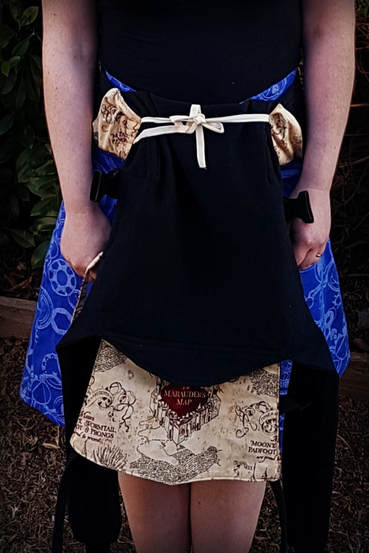
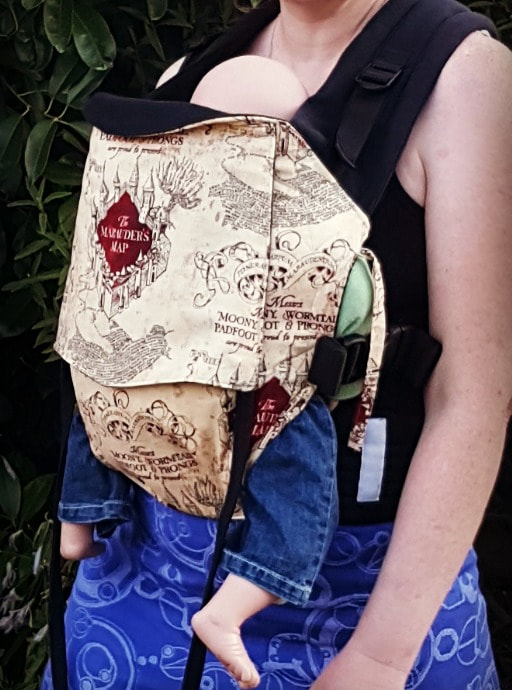
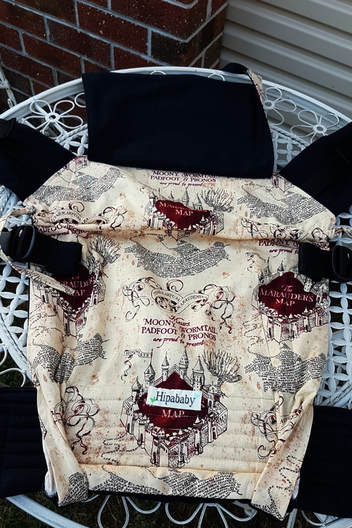
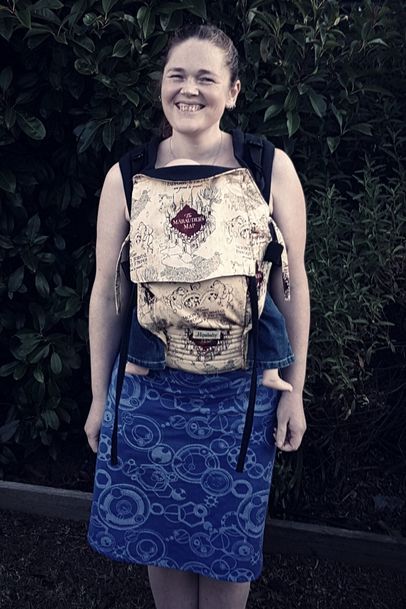
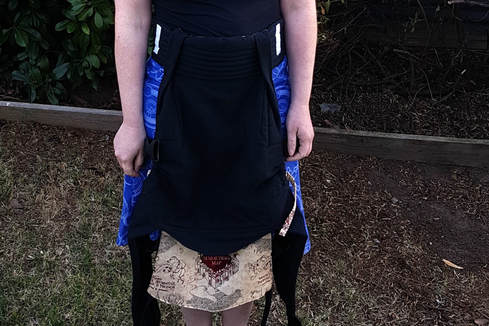
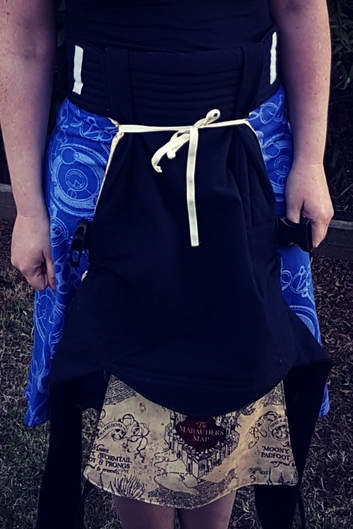
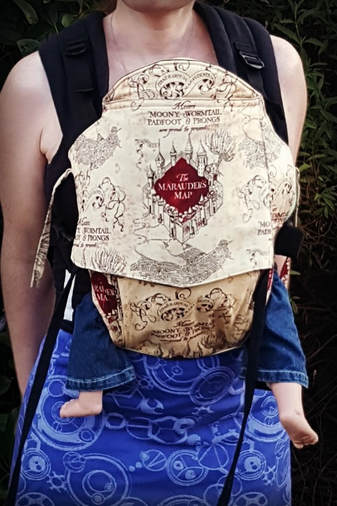
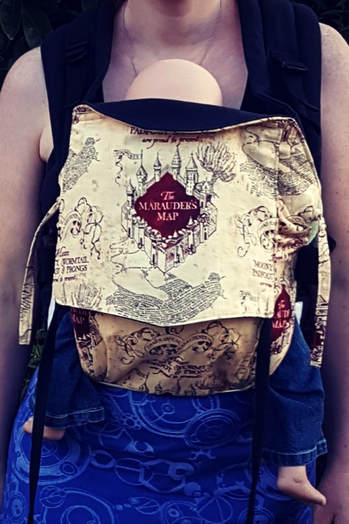
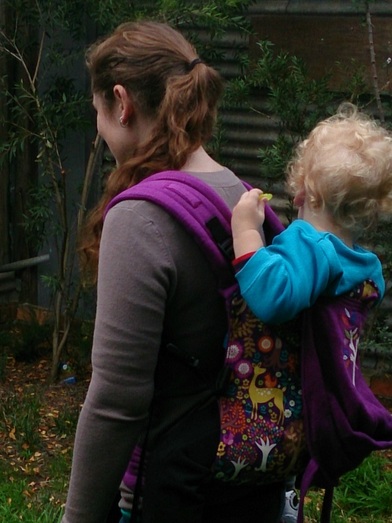
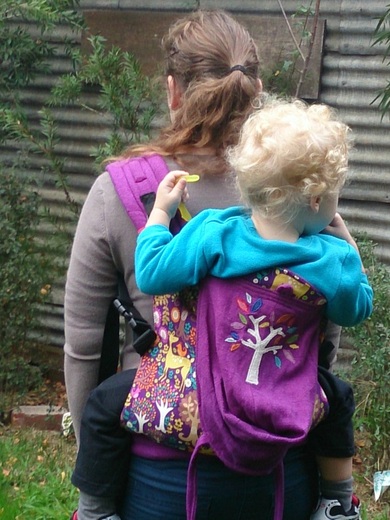
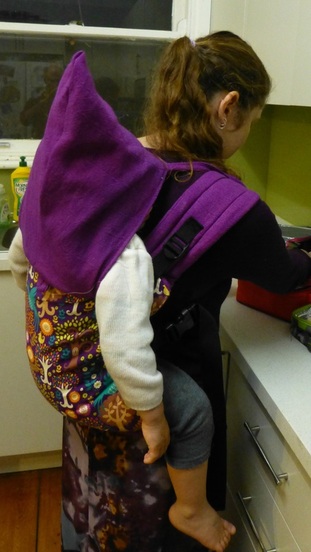
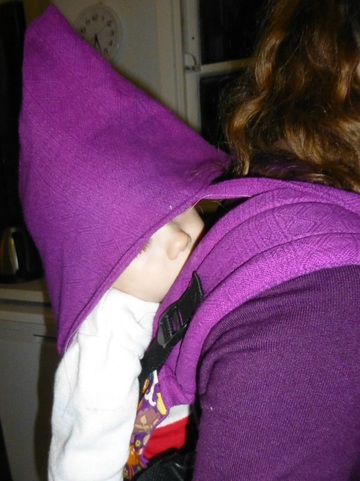
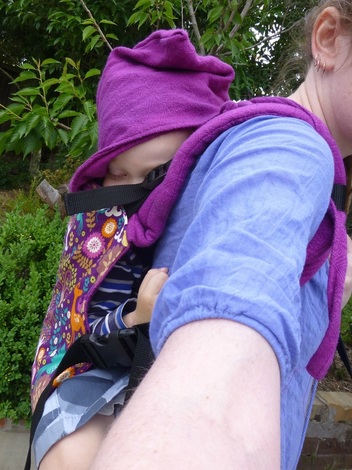
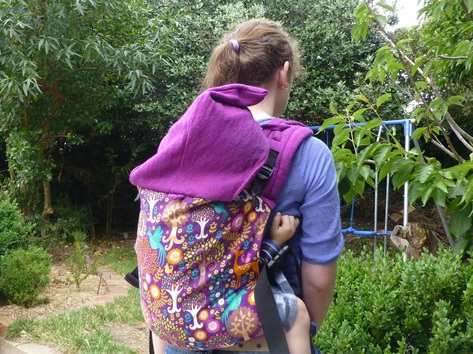
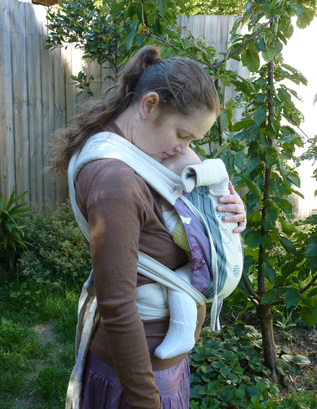
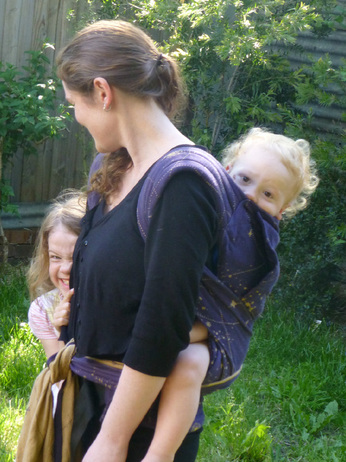
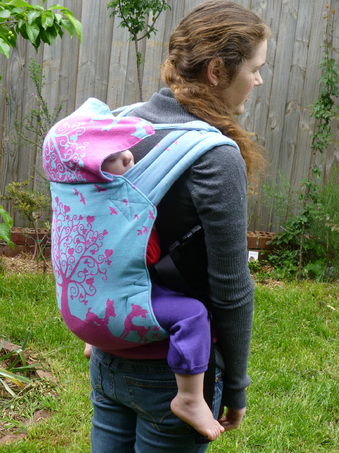
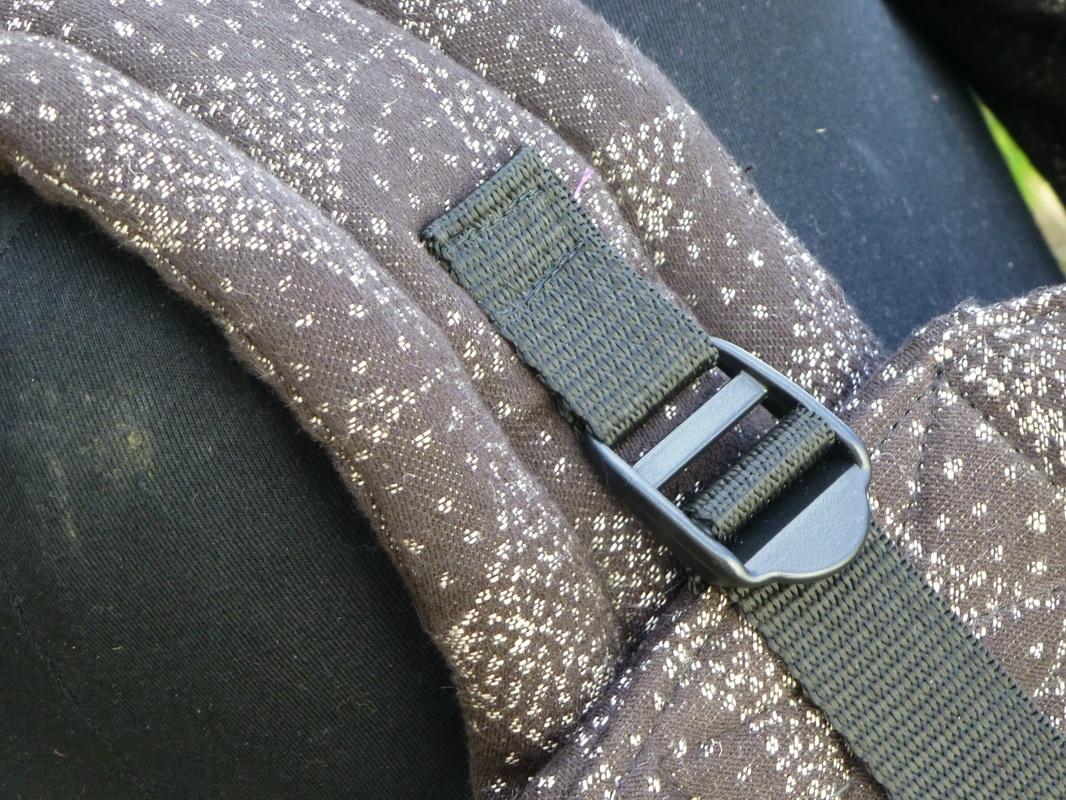
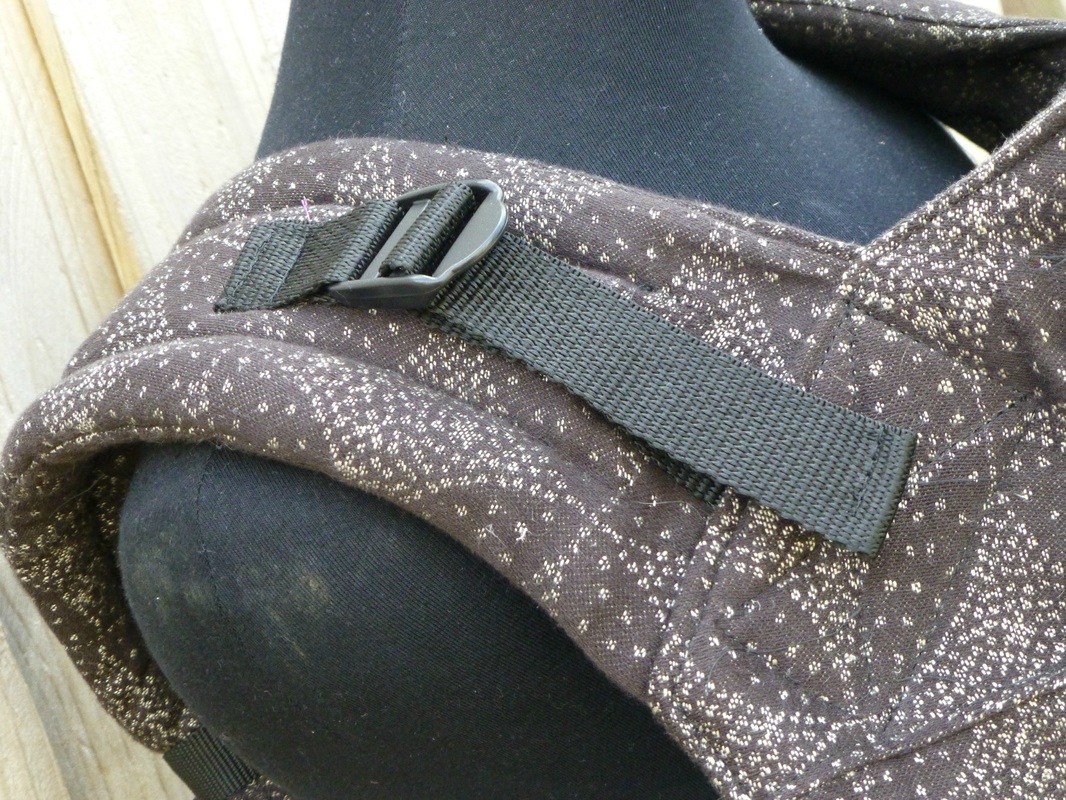
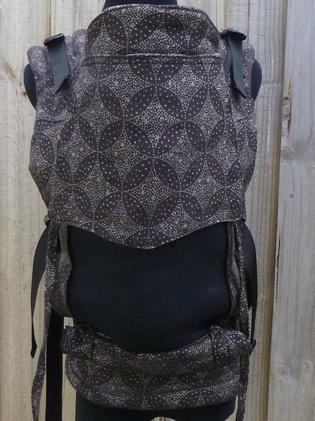
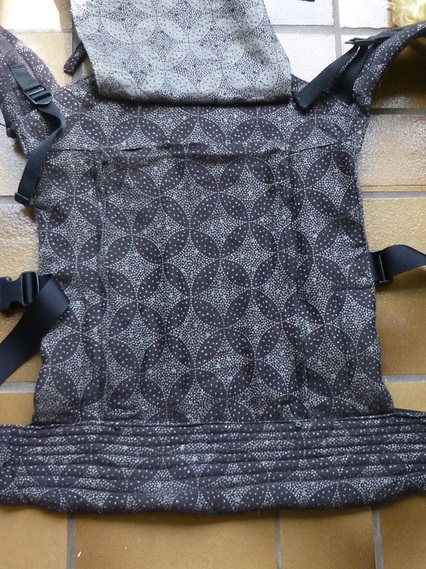
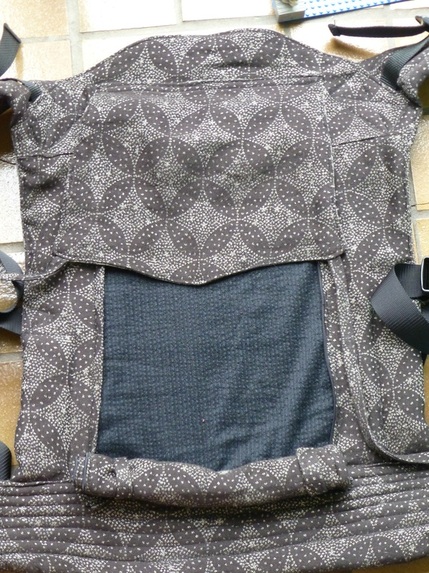
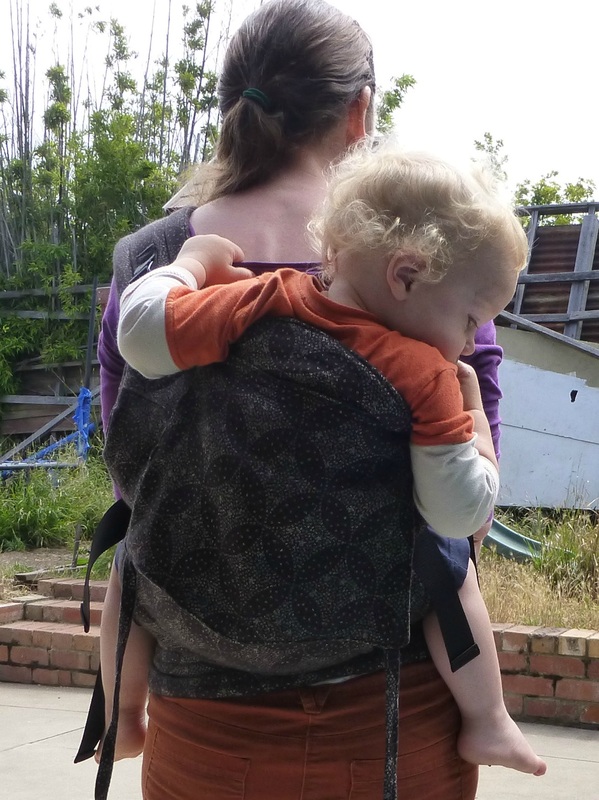
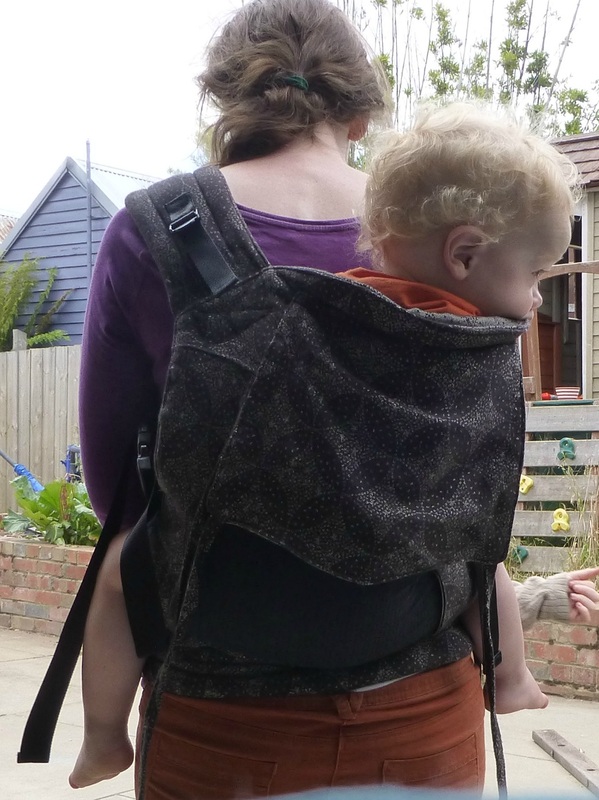
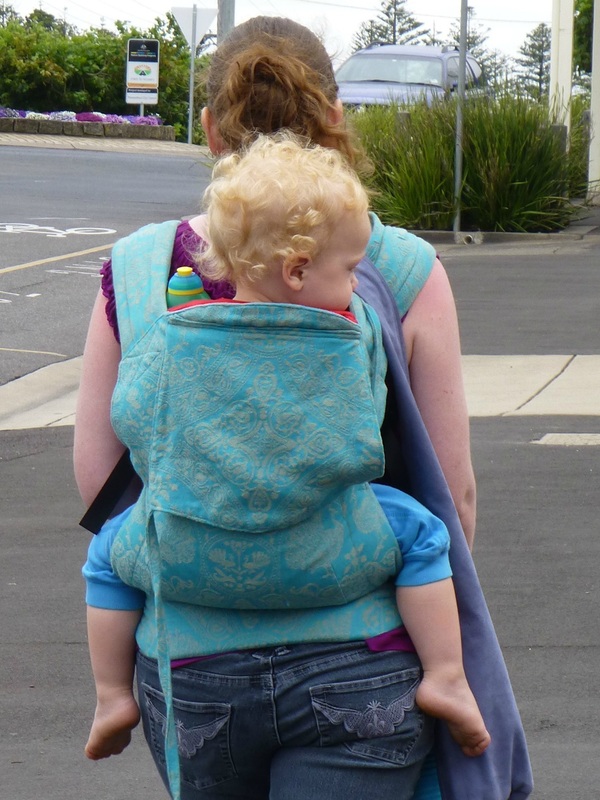
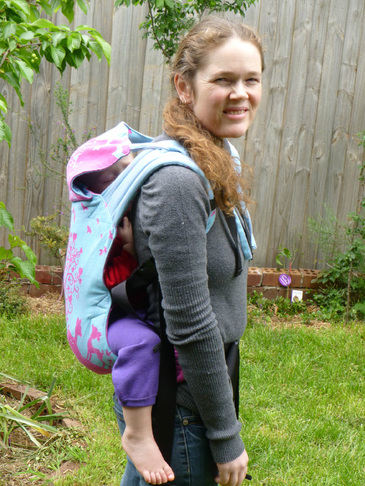
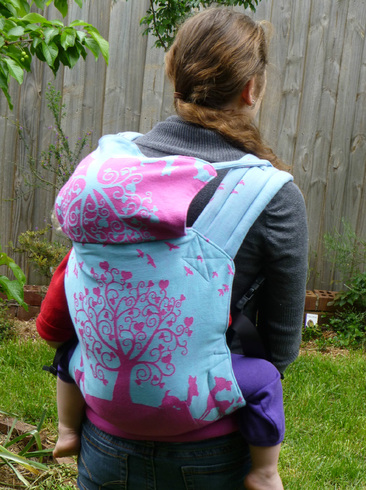
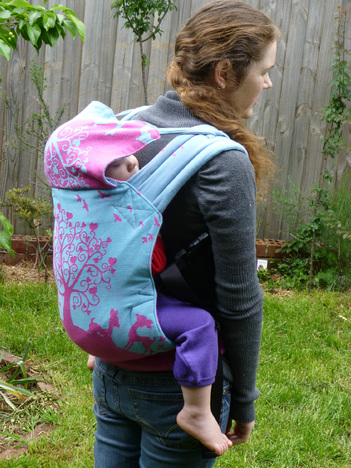
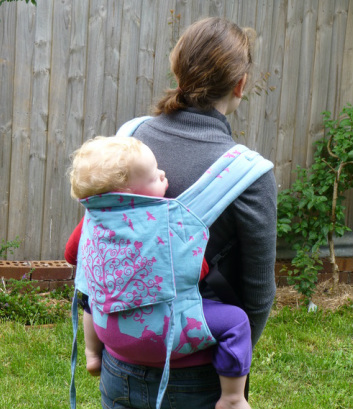

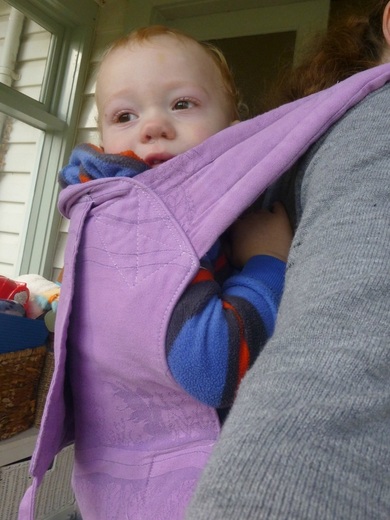
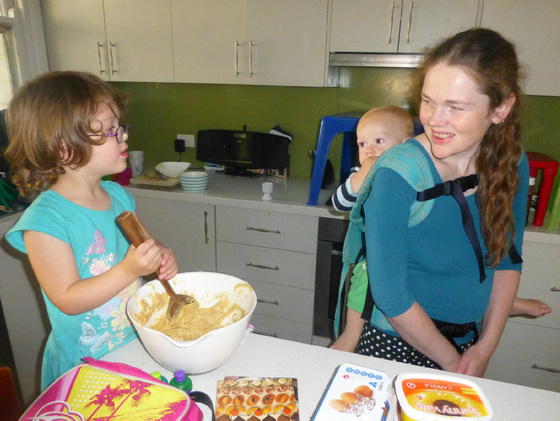
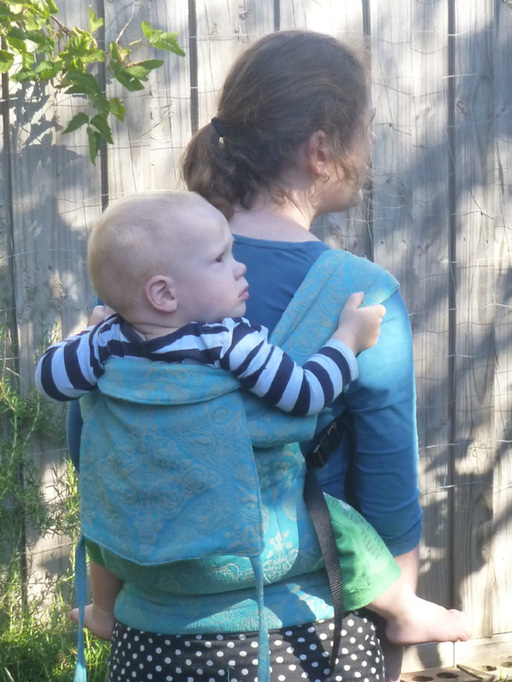
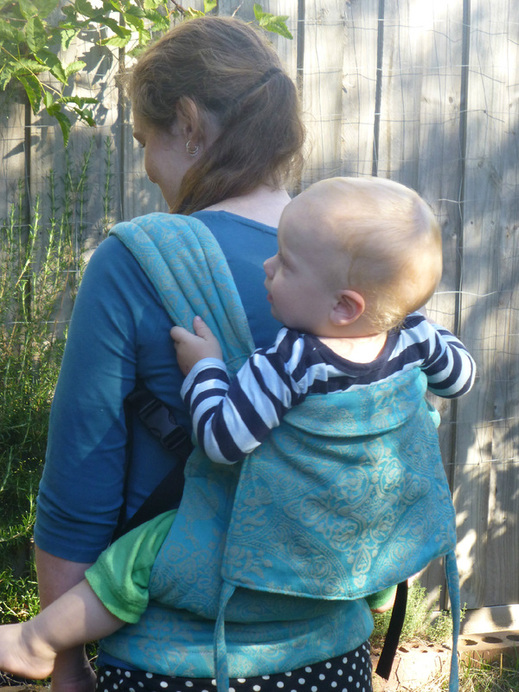

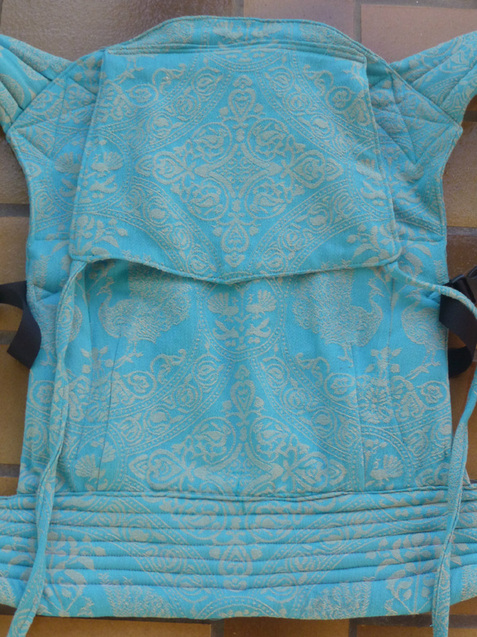
 RSS Feed
RSS Feed